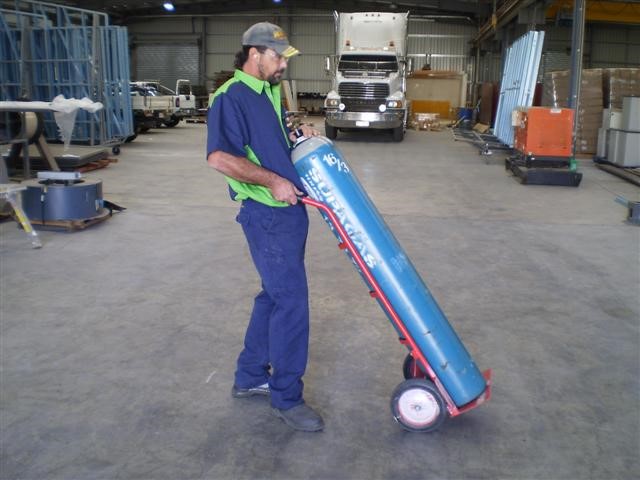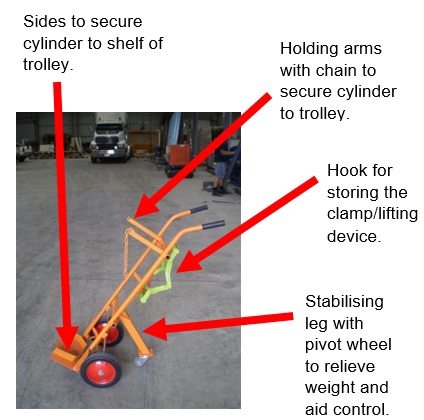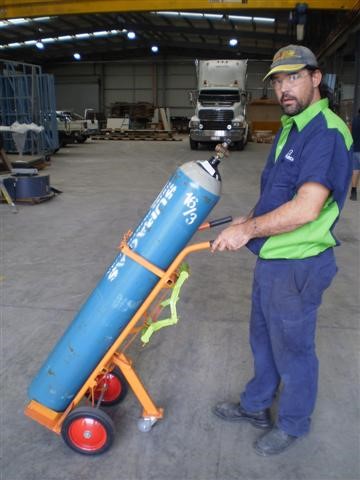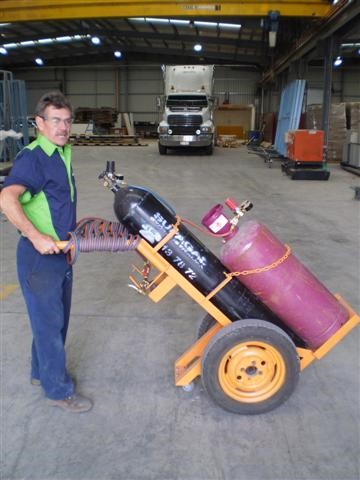Manually moving gas bottles – Monarch Building Systems
Monarch Building Systems Pty Ltd manufactures and supplies building products for residential construction. It currently employs 22 workers.
Background
Monarch's products include wall panels with steel framing, external cladding, finishes, windows and doors, ready for site assembly and fit-out.
In 2012, the Participative Ergonomics for Manual Tasks (PErforM) program was introduced at Monarch to facilitate more effective management of hazardous manual tasks.
What was the hazardous manual task?
On a daily basis, workers are required to retrieve gas bottles from the storage area to carry out tasks such as welding. The gas bottles are heavy, lack handles and are awkward to lift and carry.
Use of the PErforM program had made workers more aware of hazardous manual tasks. This led to one worker identifying gas bottle handling as a hazardous manual task.
What were the risk factors?
Using the PErforM risk assessment worksheet, workers found high levels of exertion and awkward postures in the upper limbs and back when using trolleys to retrieve or return cylinders from the storage area (Figure 1).
The load required high exertion because of the cylinders' weight - some are quite tall and weigh in excess of 50 kilograms. They were also difficult to control and balance.

1. Old gas trolley
What was the solution?
The trolley was originally a standard hand trolley. The safety advisor and production manager worked with the manufacturing team and in-house engineer, to consider control options. They decided that modifying the gas bottle trolley was the safest, most practical and most effective solution.
Modifications included installing:
- a stabilising leg with a swivel wheel to the back of the trolley
- walled sides that secure the gas bottle on the bottom of the trolley
- holding arms that secure the gas bottle at the top
- a chain (strap) that holds the bottle in the securing arms
- a hook to hold the clamp/lifting device.
The third wheel spread the weight of the load over a larger base so less force was required to move the trolley and the cylinder was more stable, reducing posture risks. (Figures 2, 3 and 4).

2. Trolley modifications

3. Small trolley

4. Heavy duty trolley for oxy set
Outcomes and benefits
The changes to the gas bottle trolley led to a significant reduction in the forceful exertions required by workers performing this task. This in turn led to a reduction in manual task related injuries.
Other benefits for Monarch since the PErforM program was implemented to address manual task hazards include improvements in:
- manual tasks risks knowledge amongst the workforce
- work health and safety performance and legislative compliance
- workplace safety culture and worker confidence to speak out about health and safety issues.
Monarch found that by involving team members in the risk management process, the business had a more realistic view of hazards and risks workers were exposed to while carrying out their duties. This allowed informed decisions to be made about safety improvements in the workplace.
This positive culture has prompted team members to take ownership of their workplace and actively participate in addressing safety issues.